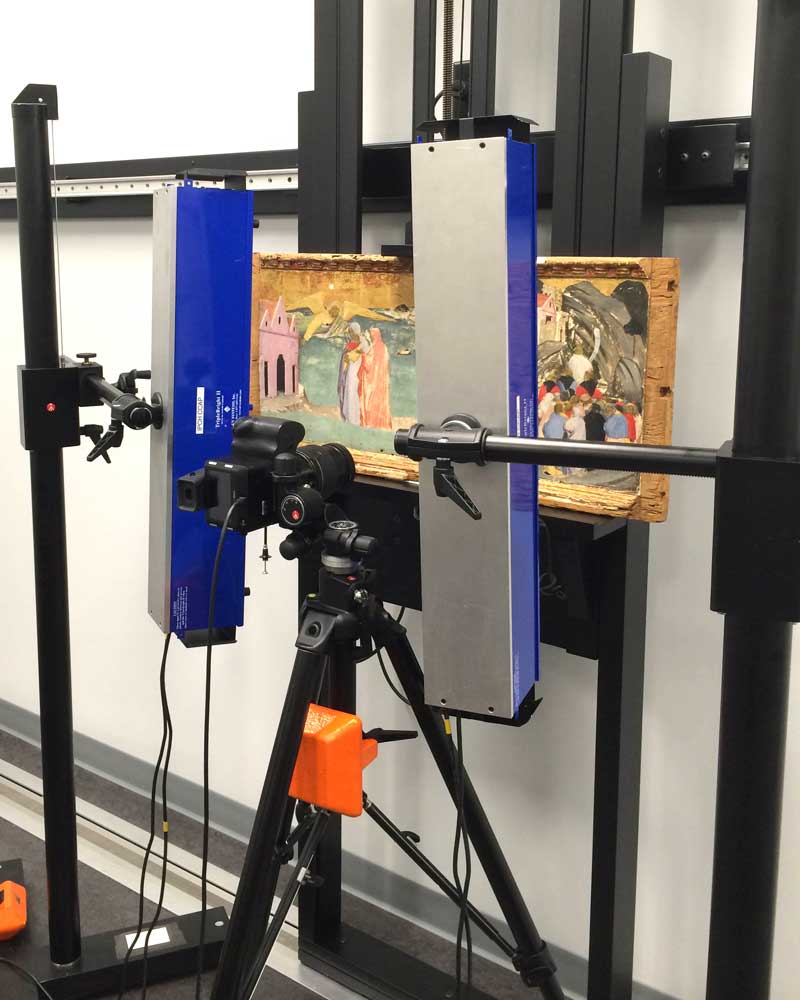Site Specific Easels
These easels are designed from the ground up and are very specific to a particular space and a particular use. Generally speaking, they cover any type of photographic service task including x-ray work. Typically motorized, once staged, the painting can be moved vertically to change the position at which shots are being taken and also the entire easel can be moved horizontally along a track. On most versions, the same features that appear on our floor models for expanding the vertical range of painting height and also the auxiliary stays for staging small paintings are still utilized. On other more customized versions various telescoping aluminum tracks are used for vertical adjustment. Each job is unique in form and function and although we start with the same basic principles in mind the distinctive nature of these easels demand flexibility and wide ranging mechanical expertise.
Photo: Yale Center for Conservation & Preservation
Photographic Services Department
Easel Functions
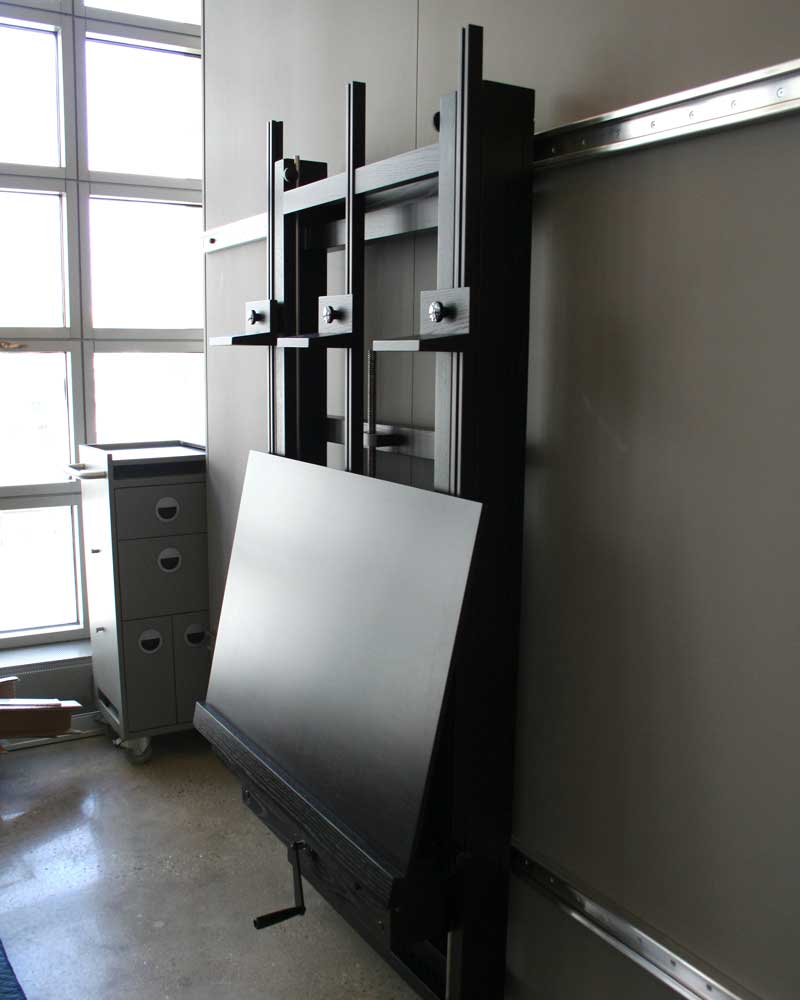
Design
Each project starts with a thorough understanding of the goals of the conservation department’s team. Drawings and specifications are generated and then approved prior to beginning.
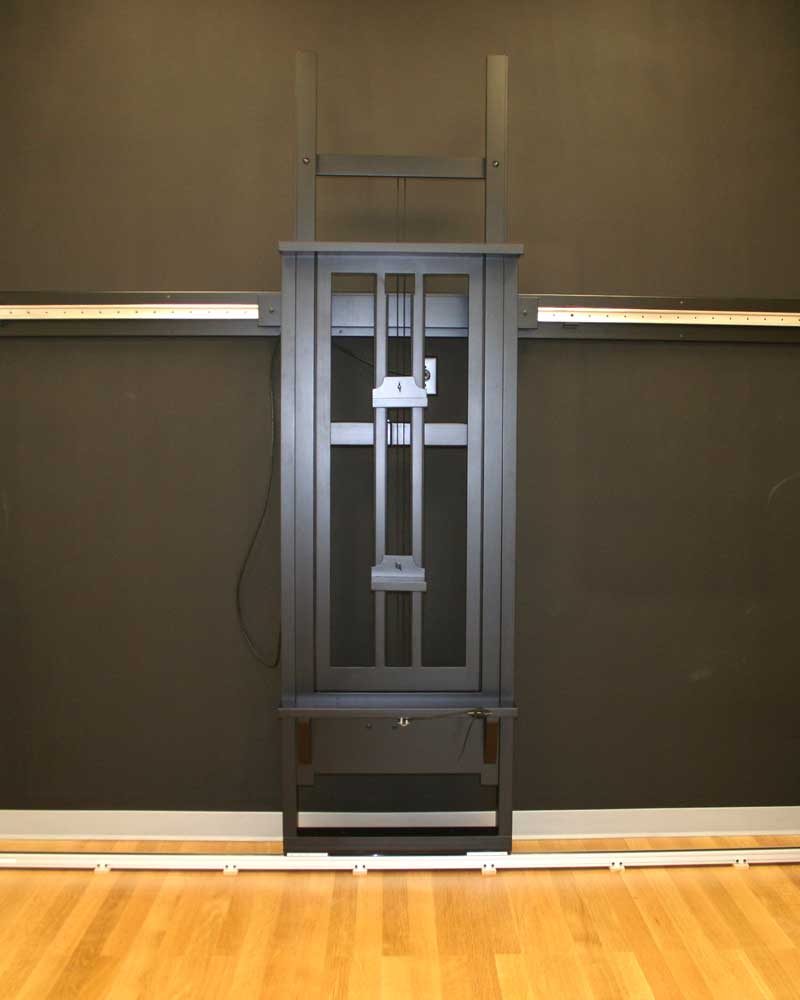
Materials
The easel itself is made mostly from wood, typically maple or mahogany, with an ebonized stain and flat sheen top coat so as not to reflect light and cause glare. Many other parts are aluminum and various other metals.

Hardware
The array of hardware and the myriad of functions is vastly different form our typical floor models – delve further to learn more.
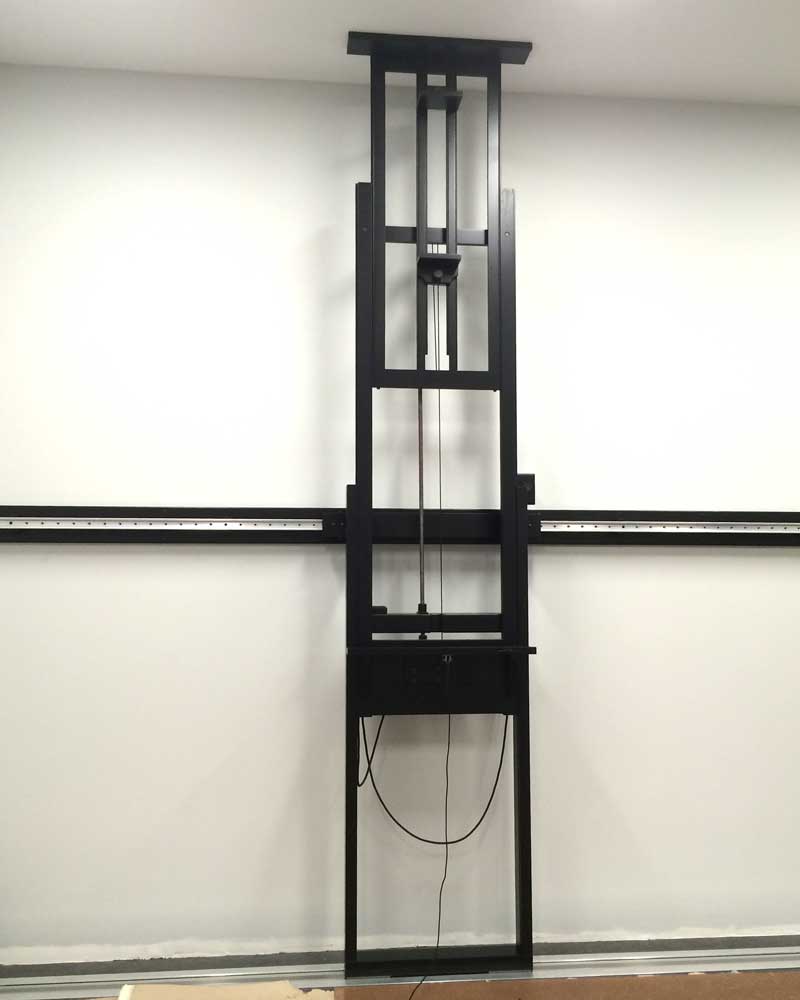
Vertical adjustment
Typically, a gear motor with variable speed control is used to slowly and precisely raise or lower the painting. To increase the canvas height capacity the same rope and pulley mechanism as our floor models is utilized.

Horizontal movement
The easel sits on carriages mounted on an aluminum floor track that houses a drive belt and is moved via a gear motor. A variable speed control is employed to accurately position the easel along the track.
Specifications
The specifications for these easels vary greatly depending on the intended use and the eventual design. Many features are typically motorized but do not necessarily have to be. In order to meet the goals of both function and budget we can tailor the scope of work accordingly. Our team consists of not only skilled woodworkers but of electrical and linear motion engineers as well as our trained installers who all work together towards the final objective.
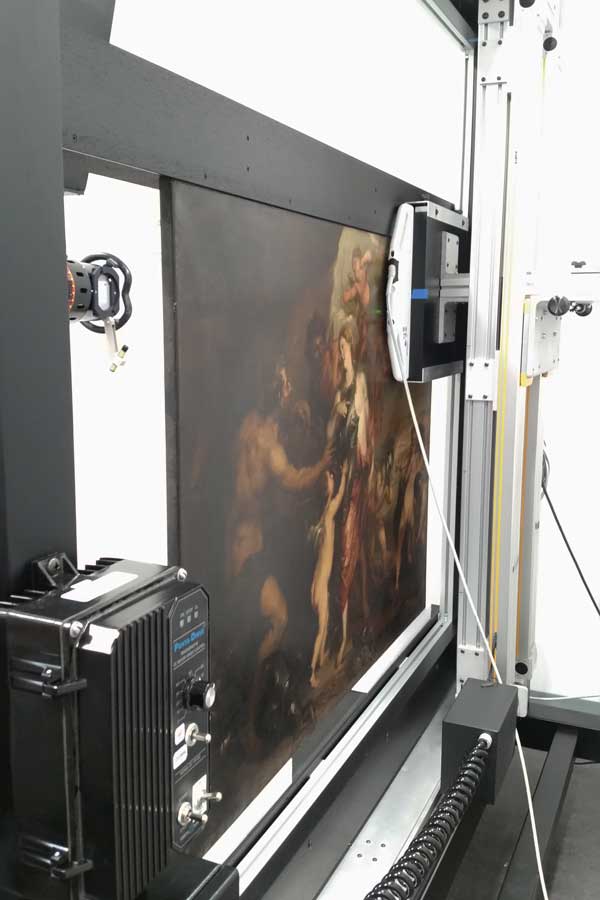
Large floor model easel for digital X-ray work

